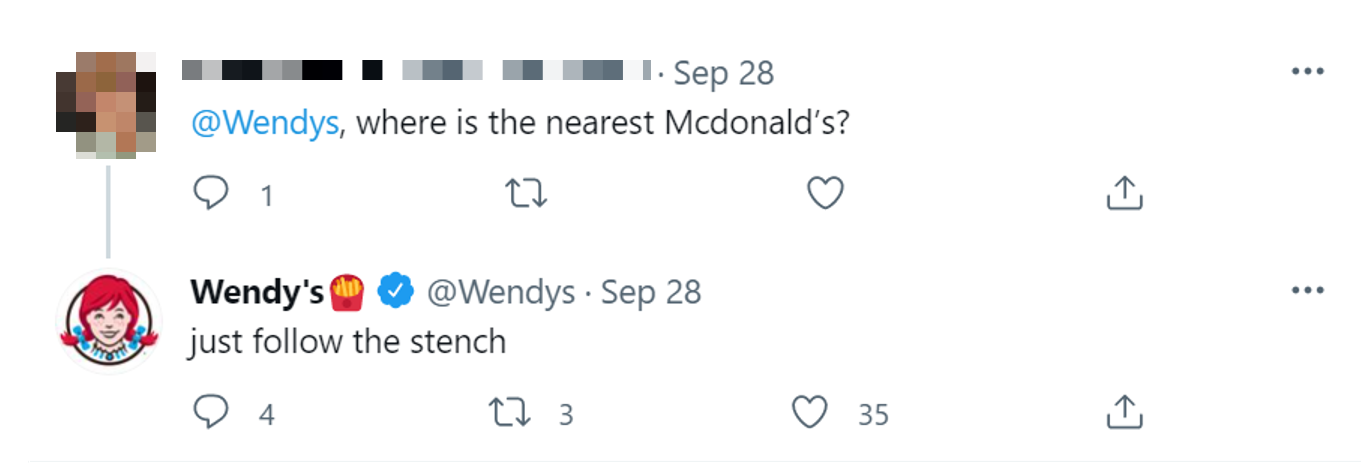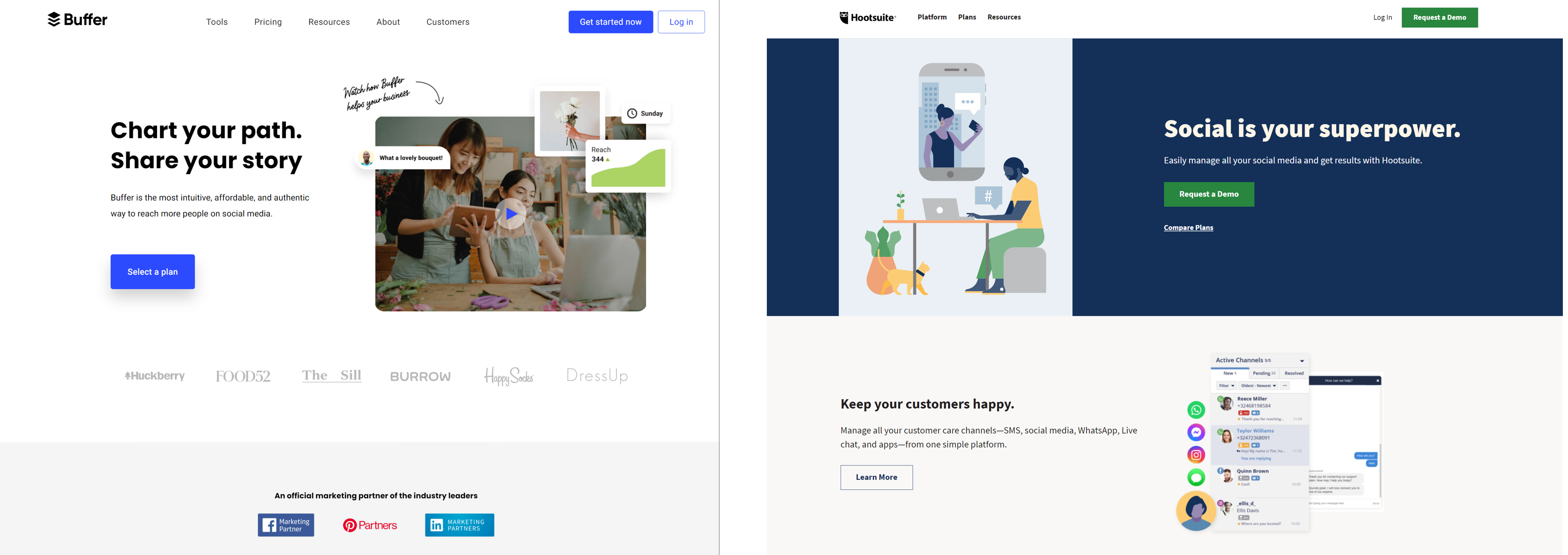Social Media Marketing Basics You Didn’t Know You Needed
In this video, Alicia from the WebFX social media team discusses the social media marketing basics that are sure to set you apart from your competition.
Transcript:
Find us on LinkedIn.
Follow us on Instagram.
Gaining new subscribers is just one of the tasks you’ll focus on when you become familiar with the social media marketing basics.
There’s plenty for a social media manager to do in a day. From content creation to audience engagement, using social media for marketing requires a variety of skills and strategies.
I’ll dive into more of these skills and strategies in this video. Whether you want to hire someone to handle your social media promotion or take it on yourself, you’ll have a pretty good understanding of social media marketing and management after this video.
I can’t talk about the basics without first giving you a definition of social media marketing, so let’s start there.
What is social media marketing?
Social media marketing means using different social media channels to reach your target audience and achieve your business goals, whether those goals are to interact with more people or get more sales.
Social media management is a similar term that refers to the action of putting together and implementing a social media marketing strategy for your business. Your strategy may include both paid advertising and organic, or free, tactics.
The cost of social media
If you’re considering how much social media costs, the answer depends on what you do. Running social media ads costs as much as your budget allows, with some minimum spend requirements in place on different platforms.
An organic social media strategy doesn’t necessarily have a set cost, unless you pay someone else to do it. Other than that, you have to factor in the value of your time, any tools you use, and other budget elements that come into play for your business.
Keeping up with social media changes
It’s not easy to teach the social media marketing basics because things are always changing.
The current platforms adjust their algorithms and add new features on the regular. Sometimes new apps enter the field and old players cease to exist.
Because of this never-ending change, the number one thing to remember when getting started with social media is that the learning never stops. That means reading industry publications like the WebFX Blog, Social Media Examiner or Social Media Today, watching videos, reading books, following social media experts, and doing whatever else you can to stay on top of things.
If this seems like a lot, that’s because it is. And we haven’t even gotten to the strategy portion yet. You might be better off hiring a social media manager or a team of social media professionals if you already have a lot on your plate.
So, now that you’ve gotten an overview of social media promotion, I’m going to explain what you can expect when crafting your strategy. I’ll break this information down into three parts: Before you post, when you’re ready to post, and after you’ve posted.
Before you post content on social media
Posting on social media without a plan is like walking into a new house with the lights off and no one to guide you. It’s certainly not ideal, and you’ll probably bump into some obstacles you didn’t anticipate.
Three social marketing basics you should map out before you share content with your audience are:
- Who you want to reach
- What goals you have
- Your business’s tone and style
Social marketing basic #1: Your audience
When content satisfies someone’s needs or appeals to their interests, they’re more likely to interact with your business and become loyal followers. Knowing who you’re trying to reach on social media ensures that you share only what your audience wants and avoid wasting time with irrelevant content.
Your audience is also incredibly important when you create social media ads. You don’t want to pay money to target the wrong group of people.
Proper audience targeting leads to successful campaigns that earn you a positive return on investment.
Social marketing basic #2: Your goals
Think of your goals as a destination and your strategy as the roadmap that leads to it. If you travel off course for too long, you may never get where you need to go.
Your whole strategy should align with your goals so you don’t veer off the road. If you want to grow brand awareness, sharing sales-focused posts might turn people away. On the other hand, not promoting your products enough may lead to a missed sales opportunity.
Social marketing basic #3: Your tone and style
Wendy’s is known for roasting its fans and competitors on Twitter.

While this approach works for Wendy’s, it may not be in your best interest to roast members of your own audience.
Determine your brand’s social media tone. Are you playful? Scholarly? Serious?
In terms of style, how will you represent your brand visually? If you have general brand guidelines for your business, like specific colors to use, phrases to avoid, and fonts (for graphics), make sure you follow them. If you don’t have guidelines, there’s no time like the present to get some in place.
In addition to the three social media basics above, you should also spend some time researching and reviewing your competitors on social media.
Look into trending hashtags or topics your audience is talking about. If platforms like Pinterest and Youtube are part of your strategy, research any keywords you should include in your video descriptions or pins. See if you can one-up your competition with something new.
Consider tagging your location if you’re focusing on a specific area, too.
Once your research is done, you can piece together your strategy using your newly-discovered insights.
When you’re ready to launch your social media strategy
After you’ve settled on your goals, your audience, and your social media style, you can start your social media content calendar. This basically outlines what content will go out on each platform during a set period of time. The calendar can be in whatever format works best for you, but spreadsheets are pretty common when using social media for marketing.
You may be able to pull from your content marketing efforts to create social media posts. Blog posts, case studies, videos, and infographics are great assets you can repurpose for social media promotion.
Social media plays an important part in establishing thought leadership and building trust with your potential customers. To do this, make sure the bulk of your content is focused on offering helpful information to your followers.
If you don’t have a content marketing strategy or can’t find something that fits your needs, prepare to make designs or write the content yourself. You may even need to outsource content creation if the skills needed to produce something are not in your wheelhouse.
Don’t forget about your goals, your tone, and your audience while making your calendar. The bulk of your content should be about helping your audience thrive or survive in their daily life, especially around the problem that your product or service solves.
Speaking of your audience, you’ll want to use the social media platforms that they use. This isn’t to say that you have to be on every single app that exists. If your goal is to reach established business professionals, LinkedIn may work better for you than TikTok or Snapchat.
It’s better to do one platform really well than have a presence on all the platforms. Avoid being too little butter spread over too much bread, as Bilbo would put it. You’ll spend a lot of time on social media, so choose your platforms wisely.
If you’re confident in your social calendar, get those posts and ads out there! We’d recommend using a tool like Hootsuite or Buffer to schedule organic posts.

Even though the bulk of your calendar will be scheduled ahead of time, it’s important to keep a pulse on your top 3 hashtags and any relevant news that pertains to your audience so you can jump on trends or post relevant content when needed.
After you’ve implemented your social media strategy
I haven’t covered all of the social media marketing basics yet. You can’t just schedule your posts and move on.
Check-in on a regular basis to see how your posts and ads are performing. You can track social media metrics using the baked-in tools of each platform, or your social media scheduling tool may offer its own analytics software.
For more detailed metrics, such as how many people land on your website after interacting with your social media content, you’ll need to set up a tool like Google Analytics and incorporate UTMs on each of the links that refer back to your website. This will allow you to see user’s journeys on your website based on which platform and even which post they clicked on.
Take the insights from your analytics tools to improve your strategy.
Don’t ignore your audience, either. If your content appeals to your followers, you’ll probably see comments, shares—or you may even get direct messages from people. Respond to them quickly so they know you’re listening.
People might raise concerns that need to be addressed. On a positive note, you may get compliments and praise that could be used as third-party endorsements to encourage others to purchase your products or services. Respond if you can, or set up a chatbot to keep some of the stress at bay.
Use this feedback to inform your strategy.
And this whole cycle repeats all over again when you’re ready to plan more social content for your business.
As I said earlier, it’s important to keep up with industry news and trends, so you know when and how to adjust your strategy. We can help with that!
Check out our youtube playlist on social media marketing. And don’t forget to subscribe to our YouTube channel and our Revenue Weekly newsletter to keep learning about social media and other forms of digital marketing.

We post videos every Monday.
Yup. Every. Monday.
Join the 1.5k+ marketers who get their marketing knowledge from WebFX videos.
Subscribe Now!Thanks for tuning in!